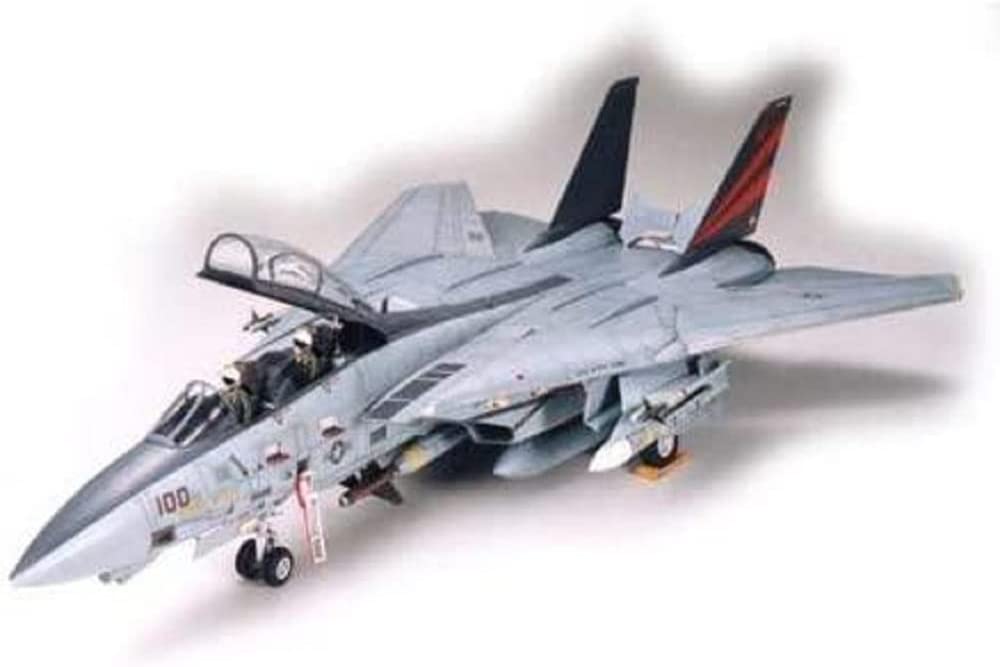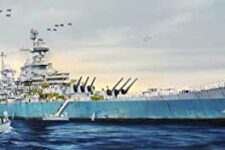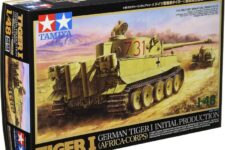Table of Contents
F14 Tomcat model kit. Know its history before building one.
The US Navy developed the F14 Tomcat as a replacement for the F-4 Phantom II fighter aircraft in the late 1960s and early 1970s. The F14’s primary goal was to develop an air superiority fighter capable of defending carrier battle groups against potential threats such as Soviet bombers and cruise missiles.
The F14 was created with long-range detection and engagement capabilities, high maneuverability, and powerful armament in mind. The F14 was outfitted with advanced radar systems and missiles capable of engaging targets at long ranges, giving it a significant advantage in air-to-air combat.

The F14’s swing-wing design, which allowed the aircraft to adjust the sweep angle of its wings in flight, was another key feature. This gave the F14 superior performance in both high-speed and low-speed flight regimes, making it extremely versatile in a wide range of combat scenarios.
Overall, the F14 Tomcat was designed to provide the United States Navy with a highly capable air superiority fighter capable of defending the carrier battle group against a variety of threats, and it served as an important part of the Navy’s air power for more than three decades.
Roles F14 Tomcat has played
Throughout its service history, the F-14 Tomcat has served in a variety of roles, including:
Air Superiority: The F14 was designed primarily to be an air superiority fighter, engaging and defeating enemy aircraft in air-to-air combat.
Fleet Defense: The F14 was also used as a fleet defense aircraft, contributing significantly to the layered defense system of the carrier battle group against potential air and surface threats.
Strike Fighter: With the addition of the LANTIRN targeting pod and the ability to carry precision-guided munitions, the F-14 could also be used as a strike fighter, delivering bombs and missiles to ground targets with pinpoint accuracy.

Reconnaissance: The F-14 was outfitted with reconnaissance equipment such as cameras and sensors, allowing it to gather intelligence on enemy targets and provide valuable information to ground commanders.
The F14 was extensively used as a training aircraft for Navy fighter pilots, allowing them to practice air-to-air and air-to-ground combat scenarios in a realistic environment.
Overall, the F14 Tomcat played an important role in the air power of the United States Navy, serving as a versatile and highly capable aircraft capable of performing a variety of missions in support of naval operations.
Combat Missions of The F14 Tomcat
The F14 Tomcat saw real combat in several conflicts, including:
Gulf of Sidra incidents (1981, 1986): During the 1980s, the Libyan Air Force challenged the U.S. Navy’s presence in the Gulf of Sidra, a contested area in the Mediterranean. In response, the U.S. Navy launched several operations to demonstrate its right to operate in the area. F-14 Tomcats from carrier-based squadrons played a critical role in these operations, engaging and shooting down Libyan fighters.
Operation El Dorado Canyon (1986): In April 1986, the U.S. launched a series of airstrikes against Libya in response to a bombing attack on a German discotheque that was allegedly sponsored by the Libyan government. F14s from the USS America participated in this operation, providing air cover and suppressing Libyan air defenses.
Gulf War (1991): During the Gulf War, F14 Tomcats served as air defense fighters, patrolling the skies over the Persian Gulf and protecting coalition aircraft from potential Iraqi air attacks. The F14s also flew strike missions against Iraqi targets, delivering precision-guided munitions to key military installations.
Operation Southern Watch (1992-2003): Following the Gulf War, F14s continued to serve in the Middle East, supporting the U.S. and coalition efforts to enforce the no-fly zone over southern Iraq. The F14s flew regular combat air patrols, engaging and shooting down several Iraqi fighters that violated the no-fly zone.
Overall, the F14 Tomcat played a critical role in several real combat missions, demonstrating its versatility and effectiveness as a fighter aircraft in a variety of scenarios.
The Excitement of Building F14 Tomcat Model Kit
Building an F14 Tomcat model kit is a popular hobby among aviation enthusiasts, model builders, and military history buffs. There are several reasons why people might be interested in building F14 model kits, including:
Historical Interest: The F14 Tomcat is an iconic aircraft that played an important role in the history of US Naval aviation. Building a model kit allows enthusiasts to learn more about the aircraft’s design, technology, and service history.
Aesthetic Appeal: With its distinctive twin tail fins and variable-sweep wing design, the F14 is a visually appealing aircraft. Building a model kit allows enthusiasts to recreate this unique appearance in miniature, resulting in a detailed and visually impressive model.
Technical Difficulty: Building an F14 Tomcat model kit requires a high level of skill, patience, and attention to detail. The F14, with its complex design and advanced technology, presents a significant technical challenge for model builders, making it an appealing project for those who enjoy a difficult but rewarding task.
Personal Connection: Many model builders have a personal connection to the F14 Tomcat model kit, either through military service or as aviation enthusiasts. Building a model kit allows them to recreate and demonstrate this connection in a tangible way.
Overall, the F14 Tomcat model kit is a popular choice among aviation enthusiasts, model builders, and military history buffs, providing a unique and rewarding project that combines technical skill with historical interest and personal connection.
F14 Tomcat Model kit Variant
There are several F-14 Tomcat model kits available, each with its own set of features and specifications. Here are some general building tips and considerations for an F-14 Tomcat model kit:
Research: Before starting your build, you should do some research on the specific variant of the F14 Tomcat model kit that you’re interested in. This includes researching the product’s design, specifications, and service history. This information is available online, in books, and in F14 Tomcat model kit instructions.
Building the Model
Make sure you have all of the necessary tools and materials before starting your build. Glue, paints, brushes, sandpaper, and other modeling supplies are included. It’s also critical to thoroughly inspect the kit parts to ensure they’re free of flaws or damage.
Assembly: Carefully follow the kit instructions, beginning with the basic structure of the aircraft and progressing to more detailed components such as the cockpit and landing gear. Take your time and be patient, ensuring that each component is properly aligned and securely attached.
Detailing: Once the basic structure has been completed, it is time to add the details that distinguish the F14 Tomcat model kit. Decals, panel lines, weathering effects, and other minor details are included. Take care to closely follow the instructions and reference photos, as this is what will give your model its distinct look.
Finishing touches: Once all of the details are in place, it’s time to put them all together. This includes adding any additional markings or details, as well as applying a clear coat to protect the paint and add shine.
Overall, building an F14 Tomcat model kit necessitates patience, attention to detail, and a love of aviation and modeling. It can, however, be a rewarding and satisfying experience with the right tools, materials, and techniques, resulting in a detailed and impressive model of this iconic aircraft.
We stock the best f-14 tomcat model kit.
Search on our site for these: F-14 tomcat diecast model, F-14 tomcat model 1/48, F-14 tomcat model 1/72, F-14 tomcat model 1/32




